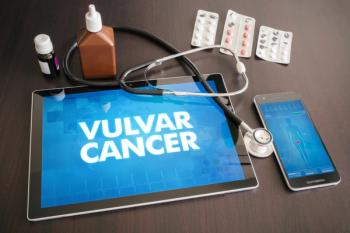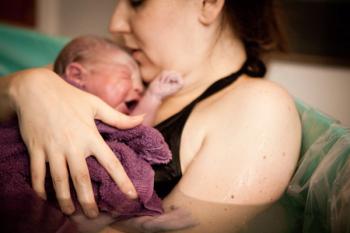
Contraceptive Options for Adolescents
Contraceptive behavior is related to changing age structure, and change in upper age limits for OCs use. However, there are unpredictable factors affecting contraceptive use such as the publicity regarding OCs and breast cancer and concern about sexually transmitted diseases (STDs) including human immunodeficiency virus infection as well as abortion legislation.
Available for download in Word Document format
Contraceptive behavior is related to changing age structure, and change in upper age limits for OCs use. However, there are unpredictable factors affecting contraceptive use such as the publicity regarding OCs and breast cancer and concern about sexually transmitted diseases (STDs) including human immunodeficiency virus infection as well as abortion legislation (1,2). In the USA the number of women aged 15-19 years will be changed from 8.5 million in 1990 to 9.2 million in 2010. It is also estimated that OC’s use will not change significantly during these years. In 1990 i.e. 10.6 million women used OCs, while in 2010 these figures are expected to be reduced to 10.2 million (3,4).
Hormonal and non-hormonal methods may be used for contraception during adolescence. OCs seem to be a popular method during adolescence. In a European multicentric study conducted by the International Federation of Infantile and Juvenile Gynecology (FIGIJ) it was found that in 6 out of 11 European Countries contributed to the study OCs were the most common, contraceptive method used (5). Among the barrier methods used the condom was the most common.
Creatsas et al (6) first evaluated the clinical and metabolic effects of the low dose monophasic “gestodene/ethinylestradiol” pill used for contraception during adolescence. Among 50 adolescents, using the pill for contraceptive purposes, no pregnancy occured and no significant metabolic changes, were seen on serum lipids and carbohydrate metabolism. The rate of intermenstrual bleeding was 0.7%. The authors concluded that gestodene/ethinylestradiol preparations have a good efficacy and minimum side effects when used during adolescence (Table 1).
Other hormonal contraceptives currently in practice are: the medroxyprogesterone acetate (Depo-ProveraR-DMPA) and the Norplant subdermal implants. The DMPA is given in a standard dose of 150 mg intramuscularly
- Decrease the risk of functional ovarian cysts
- Regulate menstrual period
- Improve clinical features of dysmenorrhea
- Prevent pelvic inflammatory disease
every 3 months and yields a rate of 0-5.2 pregnancies per 100 women years. DMPA suppresses the preovulatory surge of luteinizing hormone and follicle stimulating hormone and thereby inhibits ovulation. The “Norplant” subdermal implant system is an alternative hormonal injectable contraceptive method. The system contains six slow-releasing capsules or rods, which release levonorgestrel over 6-7 years. The World Health Organization reported a pregnancy rate of 2.6 per 100 women years with this method (7).
Among the non-hormonal contraceptive methods, the condom is very popular. In many countries it is offered by the Family Planning or other services. The correct use of the condom has to be explained by the clinical staff of the center preferably in Family Planning Units. Adolescents are advised to use lubricated latex condoms and possibly those equipped with a spermicidal material.
Contraceptive sponges and other barrier methods are less commonly used during adolescence. Diaz and colleagues (8) reported the use of sponge in 1.9% among 208 adolescents who completed a 54-item questionnaire. The authors concluded that the sponge may be a valuable contraceptive method. Psychoyos and co-workers (9) proposed a vaginal sponge containing nonoxynol 9, benzankonium and sodium cholade which both provide spermicidal and antiviral properties. The authors reported a 100% efficacy and found only two positive cervical cultures among 20 young women using the sponge for a 12-month period.
Intrauterine devices are not recommended during adolescence. In a study of 120 adolescents who received the Cu-7 intrauterine device, satisfaction with the method was reported by 72% of the users and the pregnancy rate was 2.0 per 100 women-years (10). Finally it should be mentioned that many adolescents use ineffective methods such as periodic abstinence, coitus interruptus and withdrawal prior to ejaculation. Finally the morning after pill is used in various regimens as an emergency contraception. It is concluded that adolescents, both boys and girls, should be properly informed on the modern methods of prevention of undesired pregnancies and STDs.
References:
References
1. Brown RT, Cromer BA, Fischer R: Adolescent sexuality and issues in contraception. Ped Adol Gynecol 1992;19:177-91.
2. Creatsas G: Adolescent sexuality in Europe: a multicentric study. Adolesc Pediatr Gynecol 1995;8:59-63.
3. Trussel J, Vaughan B: Contraceptive use projections: 1990 to 2010. Am J Obstet Gynecol 1992; 167; 1160-4.
4. Spencer G: Projections of the population of the United States by age, sex and race 1988-2080 current population reports series p-25 No 1018. Washington Government, Printing office 1989.
5. Creatsas G, Vekemans M, Horejsi J, Uzel R, Lauritzen C, Osier M, Athea N, Toublanc JE, Moinar A, Orley J, Bruni V, Rademakers J, Sieberg R, Widholm 0, Stedman Y: Adolescent Sexuality in Europe. Multicentric study International Federation of Infantile and Juvenile Gynecology. Adol Ped Gynecol 1995;8:59-63.
6. Creatsas G, Adamopoulos P, Eleftheriou N, et al: Clinical and metabolic effects of the monophasic gestodene/ethinylestradiol pill for contraception during adolescence. Adol Ped Gynecol 1991; 4; 76-9.
7. Shearin RB, Boehike JR: Hormonal contraception. Pediatr Clin North Am 1989;36:697-715.
8. Diaz A, Jaffe LR, Leadbeater BJ, Levin L: Frequency of use, knowledge, and attitudes toward the contraceptive sponge among inner city black and hispanic adolescent females. J Adol Health Care 1990; 11; 125-7.
9. Psychoyos A, Creatsas G, Hassan E, Georgoulias V, Gravanis A: Spermicidal and antiviral properties of cholic acid. Contraceptive efficacy of a new vaginal sponge (Protectaid), contaning sodium cholate. Hum Reprod 1993; 8: 866-9.
10. Kulig JW: Adolescent contraception: Nonhormonal methods. Pediatr Clin North Am 1989; 36: 717-30.
Newsletter
Get the latest clinical updates, case studies, and expert commentary in obstetric and gynecologic care. Sign up now to stay informed.















